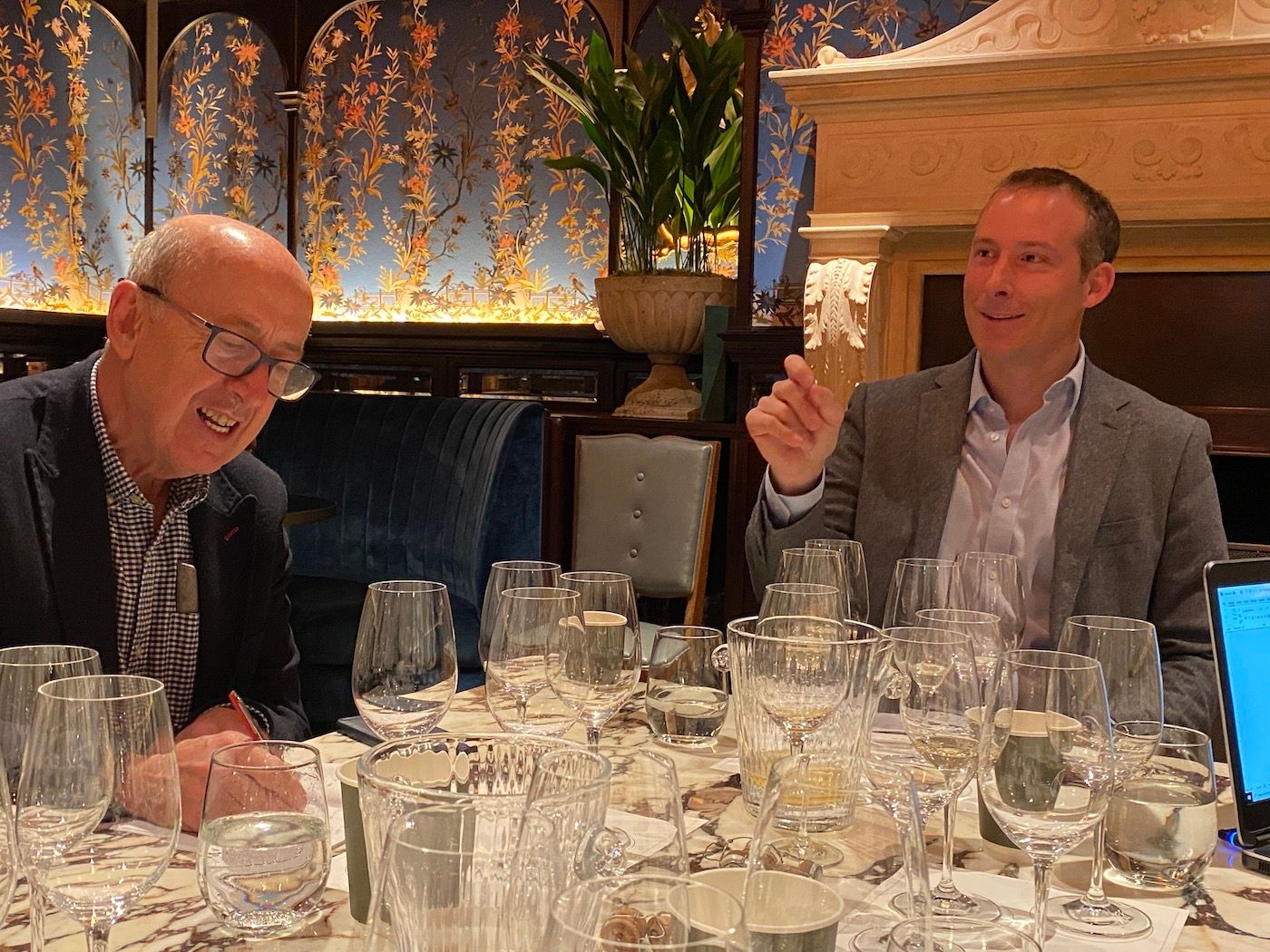“The cold fermentation gives you the acidic backbone… the downside is that you have to wait longer,” says Mathieu Roland-Billecart at the launch of Louis Salmon 2008.

Mathieu Rolland-Billecart, Nomad Hotel, London May 4, 2022
“So can we make a bit of Blanc de Blancs or what?” Mathieu Roland-Billecart asks us rhetorically, leaning back confidently in his chair, at the end of a small select tasting of the just-released Louis Salmon Brut Blanc de Blancs 2008.
We are sat in a private dining suite at the swish Nomad Hotel in Covent Garden which mirrors, as indeed the tasting does itself, the impeccable, bespoke quality of this family-run Champagne House.
The answer to the question, as if we didn’t know, is that Champagne Billecart-Salmon makes exceptionally good Blanc de Blancs, as with all of its other cuvées, and has been making a prestige Blanc de Blancs since 1964, although Mathieu concedes that the House was probably making some before that date. “1964 is the oldest record we have but we were probably making it before then,” he says.
The name of its prestige Blanc de Blancs was changed during Billecart-Salmon’s bicentennial celebrations in 2018 to Louis Salmon with the 2006 vintage. The renaming was to honour the House’s first chef de cave and also to give the Salmon side of the family a bit more prominence.
The first vintage of Louis Salmon, incidentally, was called simply Cuvée Louis and then changed to Louis Salmon after another Champagne House ‘insisted’ the name be changed. “It’s all noise… what’s important is what’s in the bottle,” Mathieu says.
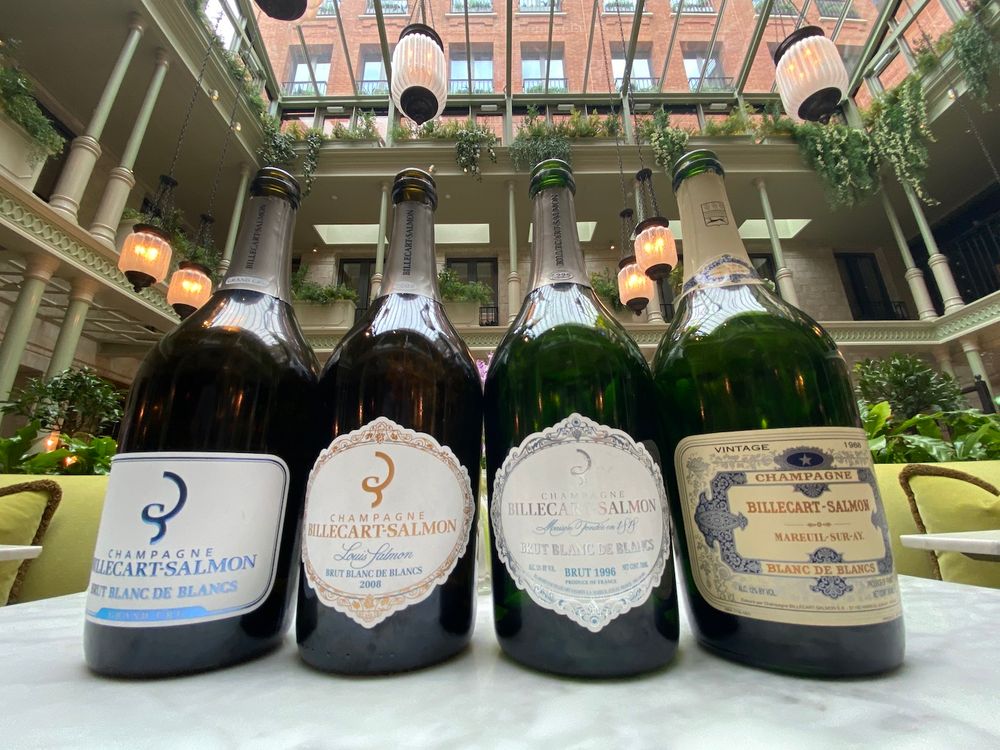
Billecart-Salmon Grand Cru Blanc de Blancs NV
To launch the Louis Salmon 2008, Mathieu has very helpfully brought along bottles of the 1996 and 1988 vintages of the Blanc de Blancs to taste alongside the new wine, as well as the new non-vintage of Billecart-Salmon Grand Cru Blanc de Blancs NV, a wine that started as recently as 2001 on account of the House getting access to more Grand Cru Côte des Blancs fruit.
“Francois (Mathieu’s predecessor) knew a lot of people were doing a Blanc de Blancs so, if we were going to make a Billcart-Salmon version, he took the view that it can only be Grand Cru and only from the Côte des Blancs…if we do one it has to be mind-blowing one.”
This cuvée is made from the four Grand Cru vineyards of the Côte des Blancs: Avize, Chouilly, Cramant and Mesnil-sur-Oger, with each site adding a different dimension to the finished wine – Chouilly fruit being more floral and precise, Avize and Cramant adding minerality and Mesnil bringing more structure and depth.
The wine spends five years minimum on the lees “longer than the majority of vintage Champagnes on the market,” says Mathieu with all dosage decisions made through blind tasting.
“Dosage is not about sugar, although it is a component, the type of reserve wine is just as important. It is like choosing a different spice – paprika or curry – and the amount you use.”
The non-vintage wine is 99% malolactic blocked and fermented in steel.
“It needs to be approachable,” explains Mathieu, “There is an expectation that clients who prefer wines more vinous will age the wine so we release it at the start of the drinking window.”
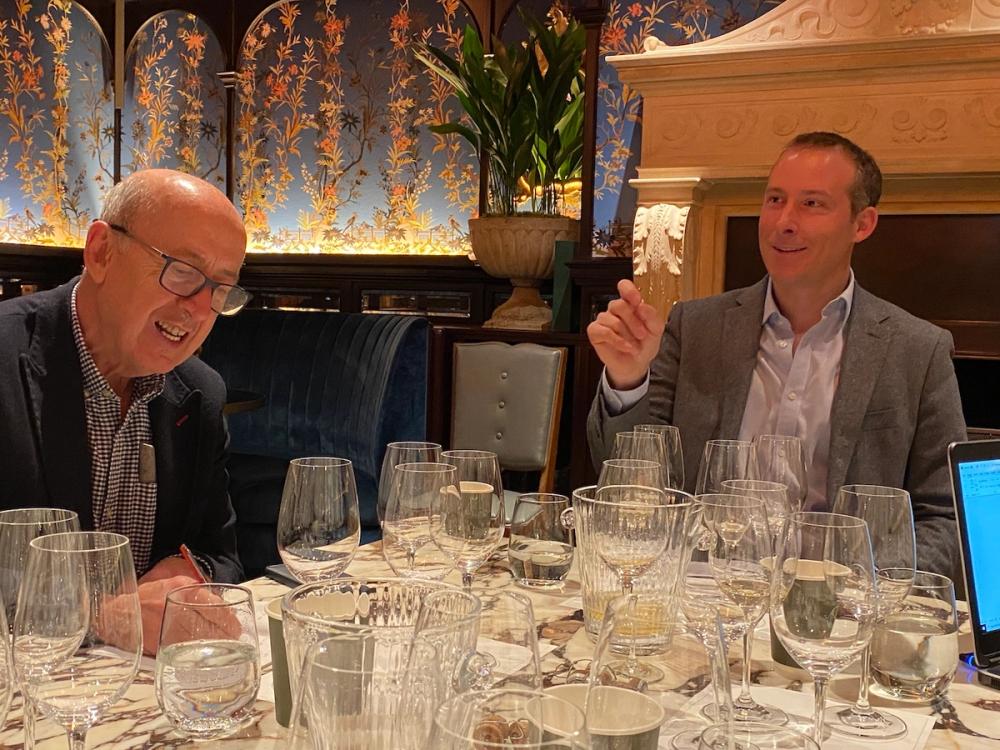
“Breaking news! Champagne is not Burgundy!” Mathieu Rolland-Billecart holds court.
“You can’t turn back time – so clients who like it in its freshness phase can drink it on release – and you can’t get that back. The wine has two lives, maturity on lees and maturity on liquor, the two lives are complimentary but you cannot substitute one with the other… you can’t cheat on time (although marketing departments may say so!). Only Gods and Godesses can cheat on time and there are none of those in Champagne.”
When discussing the 2008 vintage of Louis Salmon, Mathieu says that he believes many Champagne Houses released their 2008s too early. Billecart Salmon had the wine for over 11 years on its lees.
“The cold fermentation gives you the acidic backbone… the downside is that you have to wait longer.”
2008 is rightly hailed as a classic vintage in Champagne although, looking back, Mathieu says that there was nothing in the weather that told you that it should be a classic vintage, except that the harvest was sunny, dry and late – they started picking on September 25 and finished October 8.
As for the wine’s provenance, the Louis Salmon 2008 consists of 40% Chouilly fruit, 33% Cramant, 20% Mesnil-sur-Oger and 7% Avize. One third of the cuvée was vinified in barrel, there was partial malolactic, and the wine was disgorged on May 21 with the dosage decided blind at 7 gms/l.
“It’s early days for this baby but it has everything it needs to start its life,” Mathieu says somewhat paternally.
He adds, before the tasting of the wines, that he is very proud of all of the 2006, 2007 and 2008 wines and emphasises their differences “If you like minerality then 2006 is not for you, if you like immediate richness then 2008 is not for you. But if they are all the same what’s the point in making vintages? Burgundy and Bordeaux have no choice but we have…”
“Breaking news! Champagne is not Burgundy!”
So how did the Louis Salmon 2008 match up?
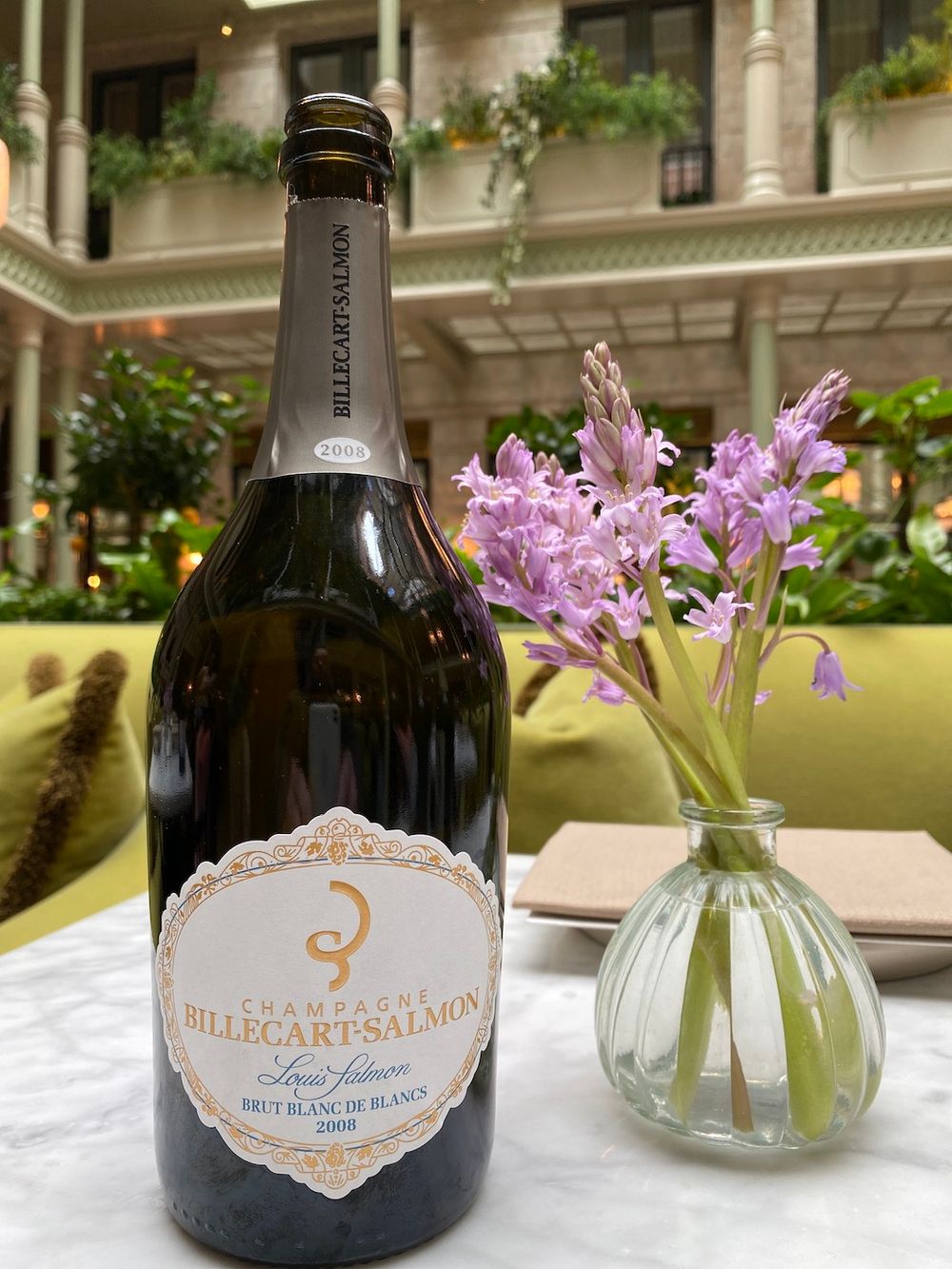
Champagne Billecart-Salmon, Louis Salmon 2008, Brut Blanc de Blancs
To look at the wine is shiny platinum gold, fine bead; the aromatics are pure and fresh with sea spray, crisp white apple and a sense of wet chalk, after 30 minutes more complexity reveals itself – more fruit and fresh nuts; in the mouth the wine is tense with tingly, mineral-driven acidity, ultra-fine texture, fresh, bright, beautifully balanced with pure Sicilian lemon, a touch of aspirin; the finish has you wanting more – it finishes dry, mineral and chalky, with lemon zest. Impressive, with a long life ahead of it.

Billecart-Salmon, Brut Blanc de Blancs 1996
Deep yellow gold, fine slow bead; the aromatics are phenomenal – such gorgeous depth, opulence and complexity; the initial aroma is rye crumb, with other savoury and umami notes – pastry, toasted bread, grilled nuts, dried fruits, caramel; the palate is fine and tantalisingly balanced between rich, rounded creaminess and tension; there is complexity that changes as the minutes pass, you find salted caramel, milky coffee, smoke, crystalised mixed citrus peel, ending on a pleasant, bitter grapefruit note. This wine is in such a good place right now. Really quite perfect. 100% malolactic, dosage 10 gms/l.
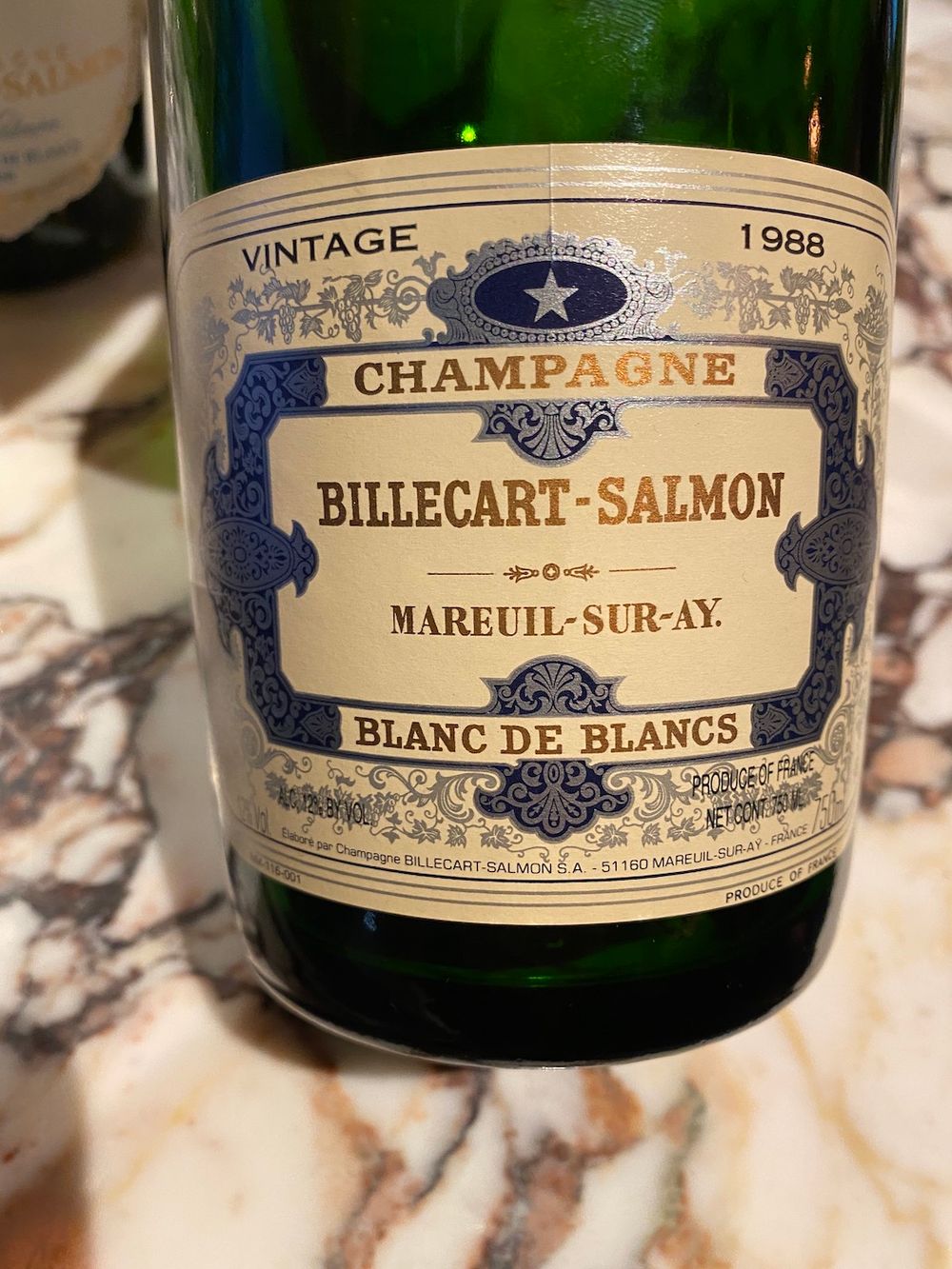
Billecart-Salmon, Brut Blanc de Blancs 1988
Deep gold, fine lazy bead; the aromatics are tertiary, complex and savoury; notes that dominate are almond paste, mocha, mushroom, old fine wood with a touch of smoke; the palate is surprisingly tense still, beautifully integrated tiny bubbles that pixilate with orange peel, bitter citrus, mushroom and other umami notes. The palate is rounded but fresh, and dry. 100% malolactic, dosage 8 gms/l.
We also tried the new non-vintage Brut Blanc de Blancs before we tasted the Louis Salmon 2008
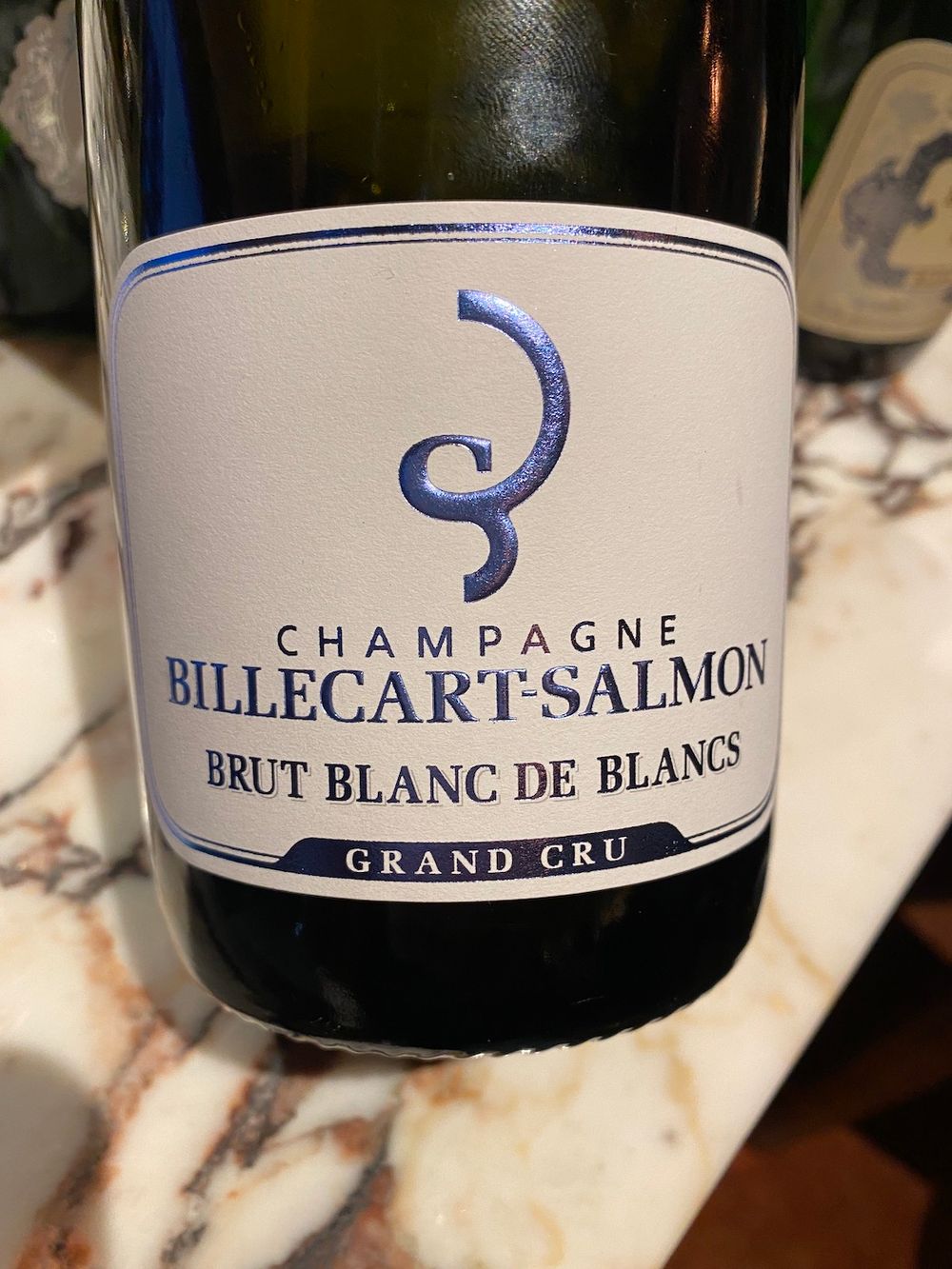
Billecart-Salmon Grand Cru Blanc de Blancs NV
The House only uses fruit from Grand Cru, Côte des Blancs sites. This new wine is based around the 2015 vintage and has a light blue metallic colour on the label to distinguish it from the previous release. 2015 was quite a powerful, concentrated year so the House has used one third 2014 reserve wine which was the opposite in style – a year of minerality and length not concentration, which has helped turn up the freshness in the wine. It has spent over five years on the lees, has 7gms/l residual sugar and has spent six months on liquor before shipment.
To look at the wine is light gold; the aromas have white orchard fruit, fresh almonds, dry fruit, a touch of blossom; the palate is tense, fresh, mineral with bright acidity nicely balanced with effervescent creaminess and a touch of fresh apple sweetness; the finish is persistent with white orchard fruits and a hint of yellow stone fruit on the finish. Holds itself up against the 2008 Louis Salmon remarkably well.
Billecart-Salmon Grand Cru Blanc de Blancs NV (RRP £65) is available from Finest Bubble, Highbury Vintners, Wanderlust Wine. Billecart-Salmon Louis Salmon 2008 (RRP £145) is at Goedhuis, Finest Bubble
